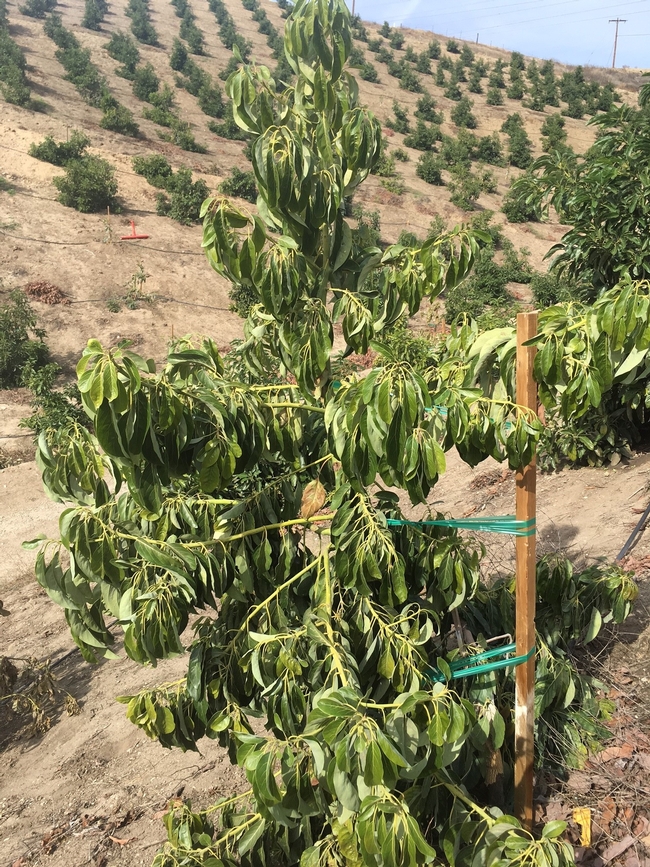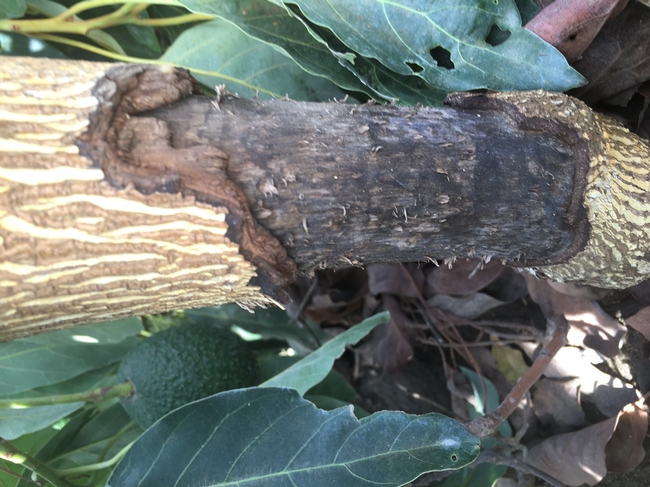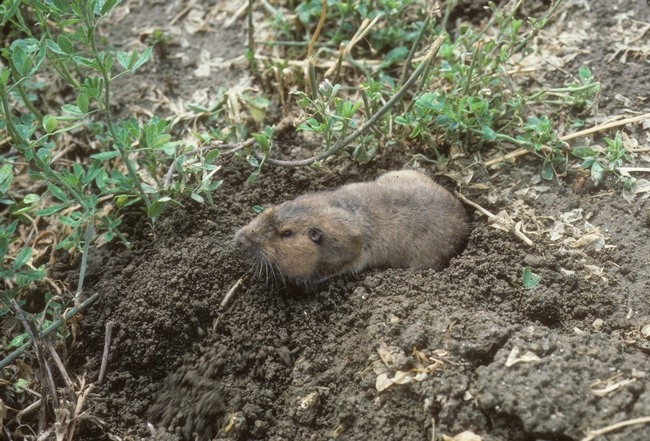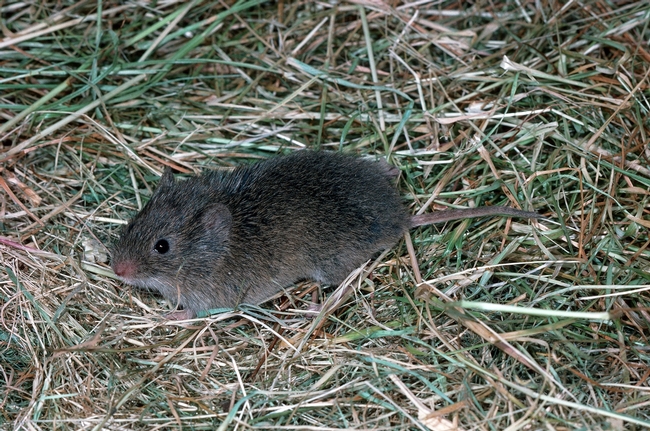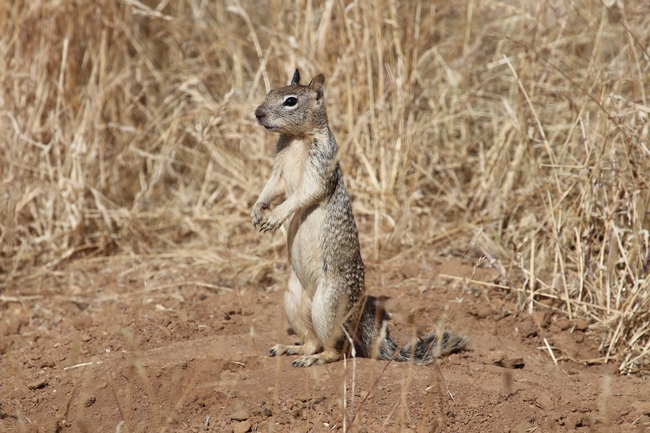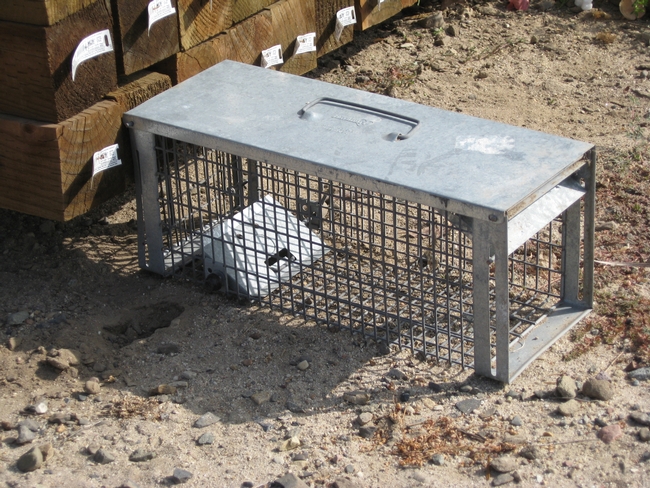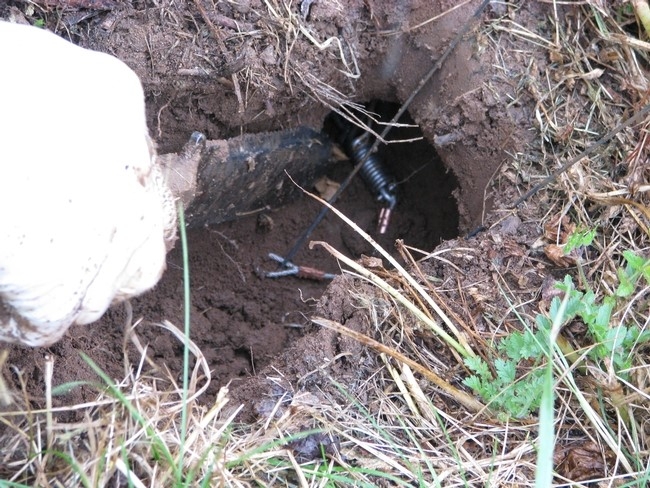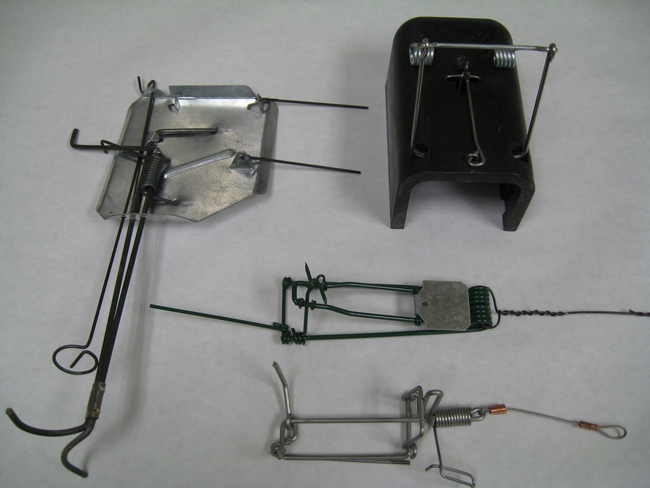- Author: Ben Faber
U.S. EPA proposed changes to rodenticide labels for agricultural use:
opportunity for public comment
Roger A. Baldwin, Professor of Cooperative Extension, UC Davis
Niamh Quinn, Cooperative Extension Advisor, UC South Coast Research and Extension Center
Rodents cause substantial damage and health risks in agricultural productions systems through direct consumption of fruit, nuts, and vegetative material; damage to the plant (e.g., girdling of stems and trunks); by providing a food safety hazard from contamination; damage to irrigation infrastructure; damage to farm equipment; burrow systems posing a hazard to farm laborers; posing a health risk through potential disease transmission; and increased soil erosion by water channeling down burrow systems, among other potential damage outcomes. They also cause substantial damage and food contamination risks in livestock holding facilities, food processing facilities, barns, and other agricultural-related structures. As such, effective management is needed to minimize these risks. The use of rodenticides is often considered the most efficacious and cost-effective tool for managing rodent pests, and as such, it is often included in Integrated Pest Management (IPM) programs designed to mitigate rodent damage and health risks. Given the significance of rodenticides in managing rodent pests, it is important to know that the U.S. EPA has recently released a list of Proposed Interim Decisions (PIDs) for public comment that, if approved, will substantially alter if and how rodenticides may be used to manage rodent pests in the near future. As such, we felt it was important to inform California's agricultural producers as to the extent of these proposed changes, and if you are so inclined, we have provided a link for you to provide public comment on the PIDs, as well as links to contact your Senate and Congressional representatives to ensure your opinion is heard.
All rodenticides are currently under review. These include first-generation anticoagulants (FGARs; chlorophacinone, diphacinone, and warfarin), second-generation anticoagulants (SGARs; brodifacoum, bromadiolone, difethialone, and difenacoum), zinc phosphide, strychnine, bromethalin, and cholecalciferol. Of these, only FGARs, zinc phosphide, and strychnine have labels for use against field rodents (e.g., ground squirrels, pocket gophers, voles, rats, and mice found in agricultural fields), but not all of these active ingredients can be used for all rodent species. As always, it is imperative to fully read a rodenticide's label before determining if it is appropriate for use against a particular species and in a specific situation. That said, the following are some significant changes that have been proposed that you should be aware of. Other potential changes have been proposed as well, so please check out the PIDs for additional details (linked at the end of this document).
- All rodenticides for field applications will become restricted-use products. This means that applicators will need to be certified to use restricted-use products in these settings. They will also have increased reporting requirements for their use.
- Aboveground applications would be eliminated in rangeland, pastureland, and fallow land. This is a substantial deviation, as many/most applications in these areas have traditionally been through broadcast applications or spot treatments. This change would leave only bait stations for ground squirrels and voles.
- Within-burrow applications of FGARs will generally not be allowed in croplands during the growing season. This would eliminate FGAR application for pocket gophers for much of the year, and would eliminate it for all uses in some crops (e.g., citrus and alfalfa in certain areas of the state).
- Carcass searches will be required every day or every two days (starting 3-4 days after the initial application), depending on the product used and where applied, for at least two weeks after the last application of the rodenticide. When carcasses are found, they must be disposed of properly. Any non-target mortalities must be reported to the U.S. EPA. Collectively, this will require a major increase in labor, potentially making rodenticide applications impractical in many settings.
- Extensive endangered species designations are anticipated that will limit or eliminate the potential to apply rodenticides. This could have large-scale impacts, although the full extent is not known at this time.
- New labels will require the use of a PF10 respirator and chemical resistant gloves during application. This is a substantial change for some rodenticide labels, requiring fit testing for all applicators, with the requirement of respirators ultimately making rodenticide application more physically challenging.
Additional details on these proposed changes can be found at the following websites:
- Anticoagulant PID: https://www.regulations.gov/document/EPA-HQ-OPP-2015-0778-0094
- Zinc phosphide PID: https://www.regulations.gov/document/EPA-HQ-OPP-2016-0140-0031
- Strychnine PID: https://www.regulations.gov/document/EPA-HQ-OPP-2015-0754-0025
- Bromethalin and cholecalciferol PID: https://www.regulations.gov/document/EPA-HQ-OPP-2016-0077-0024
As mentioned previously, these proposed changes are likely to have a substantial impact on the use of rodenticides in agricultural settings. However, these changes are currently open for public comment. If you would like to comment on these proposed changes, the required links and useful guidance can be found at the following website: https://responsiblerodenticides.org/.
You may also comment on these proposed changes to your Senate and Congressional representatives. If you are unsure who they are or how to contact them, check out: https://www.congress.gov/contact-us.
The deadline for making comments to the U.S. EPA is unfortunately short, with a final deadline of February 13, 2023. Therefore, you will need to provide your comments in short order.
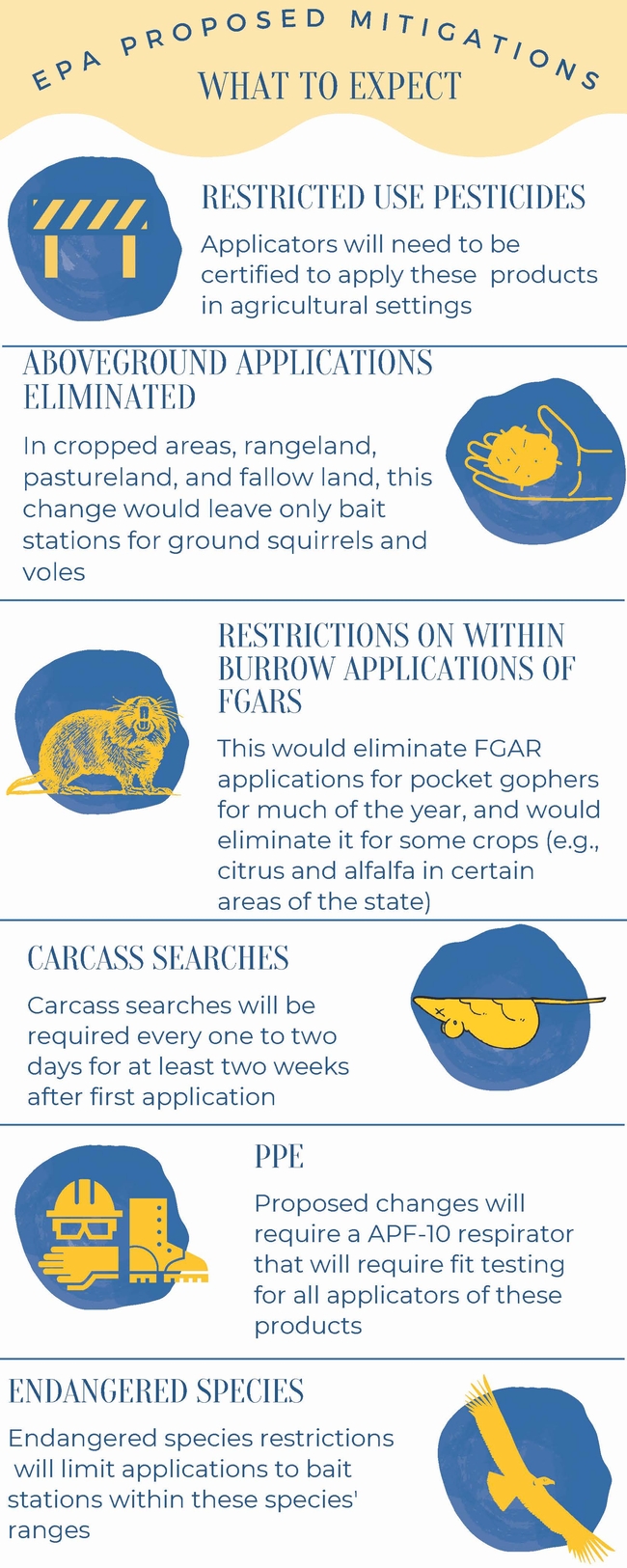
- Author: Ben Faber
Burrowing Rodents: Developing a
Management Plan
for Organic Agriculture in CA
RELATED ITEMS
- California ground squirrels Otospermophilus spp.
- Pocket Gophers Thomomys spp.
- Meadow voles Microtus spp.
This free publication is available by download.
This publication is best viewed using the free Adobe® Acrobat® Reader. You can download a free copy of the Acrobat Reader from Adobe Systems Incorporated.
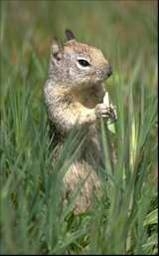
- Author: Pamela Kan-Rice
Burrowing rodents can cause extensive and expensive damage to orchards and crop fields. To manage the pests without chemicals used on conventional farms, organic growers can consult a new publication from UC Agriculture and Natural Resources scientists.
“Burrowing Rodents: Developing a Management Plan for Organic Agriculture in California” outlines management within organically acceptable methods using an integrated pest management approach.
California ground squirrels, pocket gophers and meadow voles are the three most common species that cause damage. Squirrels chew on seedlings, fruit and nuts, killing young trees and reducing crop yields. In addition to plants, ground squirrels, pocket gophers and voles can chew on irrigation lines, and their burrow systems can channel water away from plants and erode the soil. The holes and mounds created by burrowing rodents pose hazards to farmworkers and farm machinery.
Meadow mouse or vole that can girdle a tree if you aren't watching
This publication helps growers identify the rodent species on their properties, their life cycles and tools available to control them.
“Growers can read about how to effectively select and set a range of traps for burrowing rodents,” said co-author Margaret Lloyd, UC Cooperative Extension small farms advisor for the Capitol Corridor. “Traps are an important tool for organic management, but maximizing control comes from integrating knowledge. Here we present information about rodent biology, trap efficacy, biocontrol, habitat management, plant protection and other approaches to collectively manage the pest problem.”
In the publication, Lloyd and Roger Baldwin, UC Cooperative Extension wildlife specialist in the UC Davis Department of Wildlife, Fish and Conservation Biology, review the effectiveness of commercially available traps – where to place the traps, whether to use attractants, and methods of euthanizing the animals.
They also offer cultural techniques for deterring rodents such as flooding fields and deep ripping soil to destroy burrow systems. Crops for orchard floors or cover cropping can be selected and managed to minimize habitat that protects and encourages gophers and voles.
For biological control, they suggest barn owls, raptors and snakes might be able to assist, but warn growers that predators alone will not be able to eat enough of the rodents to reduce the high populations to tolerable levels for many growers.
“Effective management will rely on a suite of tools,” said Baldwin.
The 15-page publication is available for free download at https://anrcatalog.ucanr.edu/Details.aspx?itemNo=8688.
- Author: Roger Baldwin, Ryan Meinerz, Gary Witmer and Scott Werner
Baldwin and Meinerz are UC Davis and Witmer and Werner are USDA/APHIA/Wildlife Services-National Wildlife Research Center
Voles are short, stocky rodents that often cause extensive girdling damage to a variety of tree and vine crops throughout California. Vole management is often quite challenging given how numerous they can be in a given area. In more recent years, effective management has often relied on some combination of vegetation removal, exclusion using trunk protectors, and rodenticide application. Vegetation removal is a great tool for reducing numbers in a field, but doesn't always eliminate all problems in an area. Plus, vole population size tends to ebb and flow from low to high densities; when densities are high, vegetation removal is often insufficient to reduce girdling damage.
Exclusion through the use of trunk protectors can be a good way to reduce girdling damage as well. However, trunk protectors should be buried at least 6 inches below ground to keep voles from tunneling underneath the protectors. This substantially increases the amount of labor required to protect trees and vines. Ultimately, this approach is only cost effective if high levels of damage are anticipated.
Rodenticide applications are also frequently used to knock down vole populations. However, rodenticide applications are generally not allowable within an orchard or vineyard during the growing season, thereby eliminating the use of one of the most effective vole management tools when it is most needed. Clearly there is room for a new tool to be added to the proverbial IPM toolbox when it comes to managing voles in orchard and vine crops.
Chemical repellents are one such tool that could be considered. Historically, repellents have not proven overly effective for field application against voles. However, recent laboratory testing of anthraquinone indicated that even low concentrations of this chemical were effective at reducing grain consumption by voles. Furthermore, anthraquinone has proven effective as a bird repellent. Anthraquinone is a post-ingestive product that causes animals that consume the product to become ill, thereby making it less likely that the animal will consume the product again during a subsequent feeding event. This kind of repellent is ideally suited for trunk application given that the repellent can easily be applied to the portion likely to be consumed by the vole. If effective, minimal girdling damage should be observed. A repellent application also has the added advantage in that it can easily be paired with vegetation management to hopefully further reduce girdling damage when compared to using either one of these approaches alone. Therefore, we set up a study to test the potential impact that a combination of vegetation management and anthraquinone applications would have on girdling damage by voles to young citrus trees. We also tested the longevity of anthraquinone to determine if long-term repellency following field application was likely. We tested this impact during both spring (characterized by a cool-wet weather pattern) and summer (characterized by a hot-dry weather pattern) seasons to determine if weather impacted potential girdling damage.
We found that anthraquinone was in fact highly repellent following trunk application, with a >90% reduction in girdling damage observed following application regardless of the season when it was applied. Anthraquinone exhibited substantial longevity, with no increase in girdling damage observed for the entire summer (5 weeks) and spring (6 weeks) sampling periods. This clearly indicates substantial repellency for anthraquinone applications, with repellency to last for at least two months, and likely for much longer given that we observed no upward trend at all in girdling damage at the end of our study period.
When combined with anthraquinone treatments, the removal of vegetation completely eliminated all girdling damage during summer. However, we did not observe this same collective impact during spring. That said, the inclusion of vegetation management with anthraquinone applications is likely warranted given our understanding of the need for multiple management strategies to maintain the long-term effectiveness of rodent management programs.
These results clearly indicate effective repellency of voles following anthraquinone applications, but at this time, anthraquinone is not registered for use against any mammalian species. We are hoping to gauge the interest of growers for the registration of this repellent against voles in orchard and vine crops. This is where we need your help. We have developed a very short survey (will take less than 3 minutes to complete) to gauge this interest. Please take this very quick survey to assist in this effort:
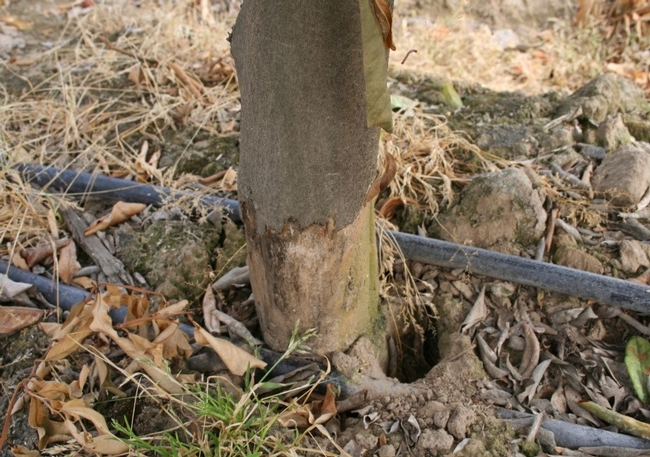
- Author: Ben Faber
redcThe hills have been dry for a long time, and the long dry fall is bringing animals into the avocado groves that normally stay out in the hills. They want the green cambium of trees and the moisture it provides. And especially rodents will have a field day in the well-maintained orchards.
Gophers are not usually a problem in mature avocados. They will often chew the bark below ground. Ground squirrels when they get hungry can go after just about any part of the tree, trunk branches and fruit. Voles or meadow mice will go after bark about 2 inches above ground. Rabbits can take out bark up to a foot above ground. This bark damage often leads to the yellowing of the canopy and if damage is extensive enough, wilting of the canopy. Growers don't normally see the damage until they see the wilted tree and start looking for the problem. If healing along the margins of the damage is occurring, it means it was damage that was done previously. If margins are still ragged, it means the beasts are still enjoying the tree. Trapping, poisons and a busy Jack Russell terrier are all effective, especially if used together. Voles especially like mulch around the base of the tree, and should be pulled away a foot to 18 inches. They make tunnels thought the mulch which then becomes a diagnostic for identifying the cause.
It's not just avocados that are ravaged by these animals. Citrus is like candy to them and then there's all those acres and acres of almonds that have been planted.
Avocado canopy collapse. Why? Check the tree out. See the red squirrel feeding stations in the background?
Damage that is healing over.
